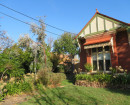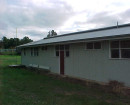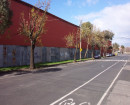The Strand Heritage Precinct
The Strand WILLIAMSTOWN and NEWPORT, HOBSONS BAY CITY
-
Add to tour
You must log in to do that.
-
Share
-
Shortlist place
You must log in to do that.
- Download report
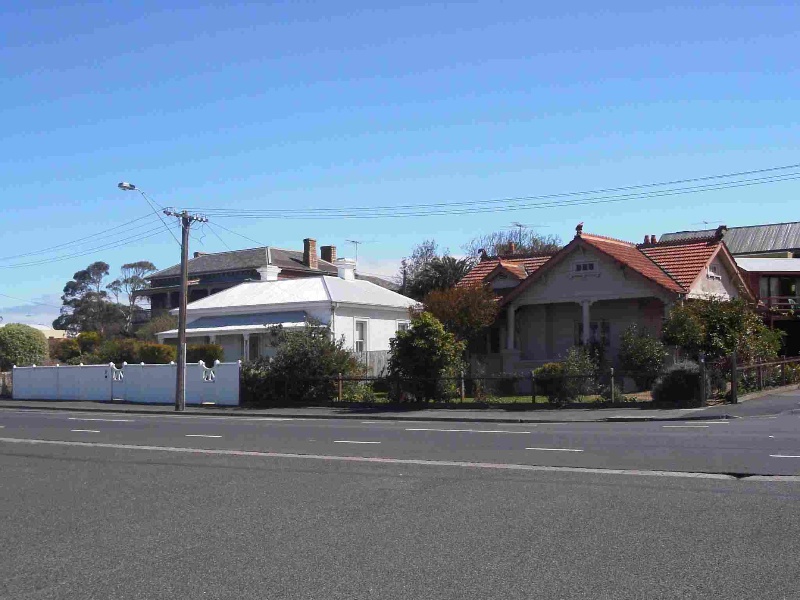

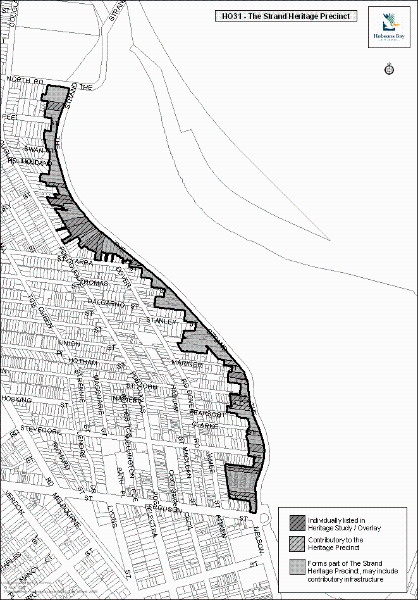
Statement of Significance
The Strand Heritage Precinct, which comprises all land in HO31 and generally includes properties with a frontage to The Strand in Williamstown and Newport.
How is it Significant?
The Strand Heritage Precinct is of local historic and aesthetic significance to the City of Hobsons Bay.
Why is it Significant?Historically, The Strand was established as a premier residential address in Williamstown by the late nineteenth century. It demonstrates the prosperity of Williamstown during the mid to late nineteenth century and, like the Esplanade, also illustrates the strong connection between the early residential development of Williamstown and maritime industries and pursuits. (AHC criteria A4 and D2)
Aesthetically, although later inappropriate development disrupts the complete expression of The Strand as a whole, the remaining small groups of often-substantial villas are significant for evoking the historic character that was once typical of the majority of this seaside boulevard. (AHC criterion E1)
On this basis, the following properties contribute to the significance of the precinct:
The Strand 4, 5, 8-9 (fence only), 10-14, 22, 24, 27, 28, 30, 53, 62, 63, 67-68, 69, 74, 75, 77 and 94.
Please note that some heritage places within this precinct may also have an individual citation in this Study.
-
-
The Strand Heritage Precinct - Physical Description 1
The Strand follows the coastline of Hobsons Bay and extends in a northerly direction from the intersection of Ferguson Street as more or less a continuation of Nelson Place. It is a residential street beside Hobsons Bay, with housing limited to its west side. The street is wide and has concrete kerbing and asphalt footpaths. There are no street trees.
Many of the early houses have been demolished and much of the later development is unrelated in terms of its form, scale, materials and siting. However, there still remain three distinct small groups of related villas - predominantly Victorian-era with notable later examples - that demonstrate the historic nineteenth and early twentieth character of the street:
The first group is situated at the southern end, generally between Ferguson and Stevedore Streets and includes:
- The 'White House', a single storey reinforced concrete house with an unusual elevated, stuccoed concrete verandah, which is supported by Egyptian papyrus-capital round columns. It retains an original front fence.
- The row houses at Nos. 10-11 and the terrace house at No. 14. These types of houses, which are relatively common elsewhere in nineteenth century Melbourne are relatively rare in Williamstown. The row houses at 10-11 retain original front fences.
- 'Tarneit', The Queen Anne villa at No. 28
The contributory houses in this group are separated by the 1970s era unit development on the site of the former 'Maritimo' mansion. However, the surviving cast iron fence and gates at least provide some visual continuity.
The second group includes the individually significant two storey 'Mandalay' at No. 24, as well as the Queen Anne villa 'Tarneit' at No. 28. Thereis also arelated Edwardian-era villas at Nos. 22-23, a two storey Victorian house at No. 27 and a villa at no. 30.
The third group begins at Yarra Street, and includes the small Victorian house on the north-west corner, two early two storey timber dwellings at Nos. 62 and 63, the magnificent Italianate polychromatic brick villa 'Monomeath' at No. 68, another notable Italianate villa at No. 69, as well as related Italianate villas at Nos. 74 and 75. There is also a Queen Anne villa at No. 77 and an Interwar bungalow at No. 80. Far to the north of this group is an isolated villa at No. 94.
Whatever has changed along The Strand and elsewhere along Williamstown's eastern waterfront the captivating view to the city has remained. Ada Cambridge described it as it seemed to her in 1903, looking from the vicarage of Holy Trinity:
Hobson's Bay in the foreground - never professing to be picturesque, but to me as full of variety and charm as a good, homely human face - and the long line of city dividing it from the sky. In the sunset of a fine day. that thread of crowded life is glowing beautifully, isolated buildings, as they catch the direct gleam, standing out as distinctly as if they were not leagues away. And after dark it will shine, a thickset band of lights many miles in length.[1]
The houses overlook the foreshore reserve, which contains a number of buildings, objects and monument with maritime connections including:
- Cannons and capstans
- Anchor and capstans
- Williamstown Sea Scouts Clubrooms
- Boatsheds
Distinctive buildings and elements include:
- 'Mandalay' at 24 The Strand (south west corner of John Street), particularly the bluestone rubble wall along the John Street frontage.
[1] Cambridge, Thirty Years in Australia, pp. 295-96
The Strand Heritage Precinct - Integrity
Integrity
The overall integrity is low, however selected groups have moderate integrity as described above.
The Strand Heritage Precinct - Physical Description 2
Context
This precinct forms the north-eastern or bayside boundary of the broader Private Survey Heritage Precinct. It is also one of three bayside heritage precincts that also includes Nelson Place and the Esplanade.
The Strand Heritage Precinct - Historical Australian Themes
Principal Australian Historical Theme(s)
Making Suburbs
Heritage Study and Grading
Hobsons Bay - Hobsons Bay Heritage Study
Author: Hobsons Bay City Council
Year: 2006
Grading:
-
-
-
-
-
RESIDENCE
 Victorian Heritage Register H0487
Victorian Heritage Register H0487 -
ST HELLIERS
 Victorian Heritage Register H0560
Victorian Heritage Register H0560 -
FORMER PRESBYTERIAN MANSE
 Victorian Heritage Register H0229
Victorian Heritage Register H0229
-
..esterville
 Yarra City
Yarra City -
1 Alfred Crescent
 Yarra City
Yarra City -
1 Barkly Street
 Yarra City
Yarra City
-
-






